A conversation with Sarawut Panhnu, designer of the Bangkok Design Week 2026 Key Visual
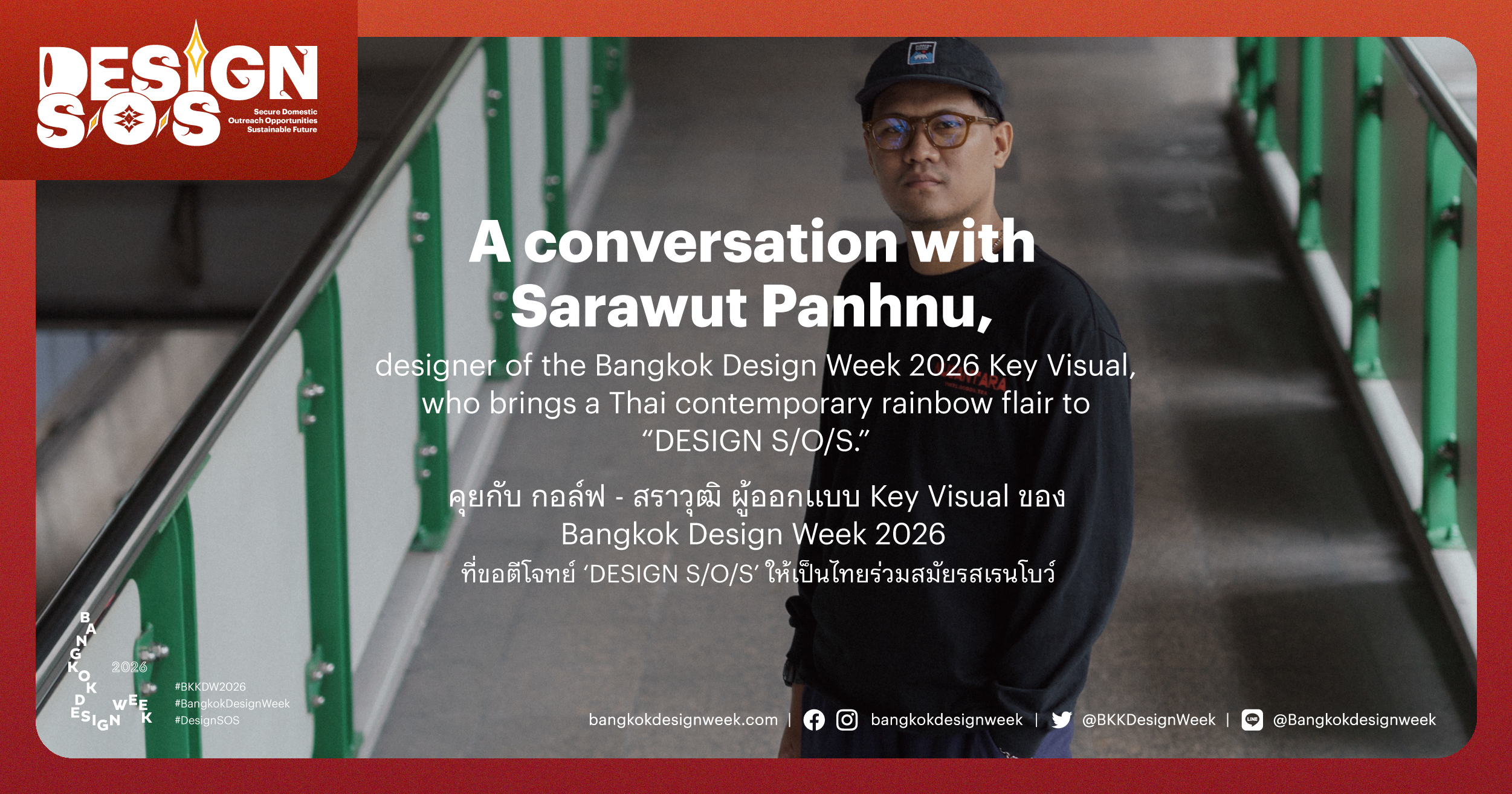
เผยแพร่เมื่อ 19 วันที่แล้ว
“Thainess” is a concept we all recognize instantly. Yet behind this familiar image lies one of the biggest challenges for designers, “What kind of Thai is it?” and “How can Thai design stand out?”
When this idea became part of the theme DESIGN S/O/S for Bangkok Design Week 2026, we couldn’t help but wonder how the festival’s Key Visual designer, Sarawut Panhnu, would interpret it.
So today, we sat down with Sarawut to talk about the creative process behind the Bangkok Design Week 2026 Key Visual, from his view of DESIGN S/O/S as a wake-up call to how he infused his signature Thai-pop style into what he calls his first truly serious approach to Key Visual design.

Interviewer: Before we get to the Key Visual, let’s go back a bit. When did you first become interested in art and design?
Sarawut: It started in early high school. I realized I loved drawing but didn’t know what to study next. When I moved back to my hometown in Lopburi, I found a vocational school with a fine arts program, so I joined. Later, I continued at Poh-Chang Academy of Arts, majoring in traditional Thai painting.
Interviewer: Coming from a traditional Thai painting background, how would you describe your current style?
Sarawut: I call it Thai Pop — bright, playful, and contemporary, but still rooted in Thai elements like patterns and composition. Some works are satirical or slightly surreal, depending on my mood. My personal pieces often tell small stories from daily life, like a visual diary.
The shift happened about seven years ago when I moved back to Lopburi. I used to restore murals in Bangkok, but there wasn’t that kind of work back home. I reconnected with old friends doing street art, graffiti, and other creative work that reflected their own lives. I wanted to do that too — to let art mirror real life. So I began mixing what I loved, like cartoons, books, and old songs, with the traditional techniques I learned at Poh-Chang. It gave me both strong foundations and room to play.

Interviewer: When did you first start working in design?
Sarawut: I’d done some album covers before, like for Phum Viphurit and H 3 F, and also the opening scene for the series The Believers. Back then, my work was purely painting on canvas — no digital tools at all. I’d scan the finished piece and pass it to the team for further editing.
Later, brands started reaching out, and I realized I had to adapt. Paintings weren’t always practical for brand use, which required digital or vector files. So I began learning digital tools, starting with an iPad and gradually moving to vector programs. Friends helped me with techniques, and over time I shifted from canvas to digital — while keeping the brushstroke feel of painting.
Interviewer: So this is your first time creating a Key Visual?
Sarawut: Not my first design project, but my first time doing it seriously and in full scale.
Interviewer: How do you define a Key Visual?
Sarawut: I see it as creating the overall mood and identity of a project. Since I’m not trained as a designer, my process is more intuitive — I start by sketching and composing in my own way. Then I collaborate with my graphic designer friends, Dashflash Worldwide and Blue Wave, who help refine the layout, graphics, and details. Through this, I learned a lot about how designers think and work.
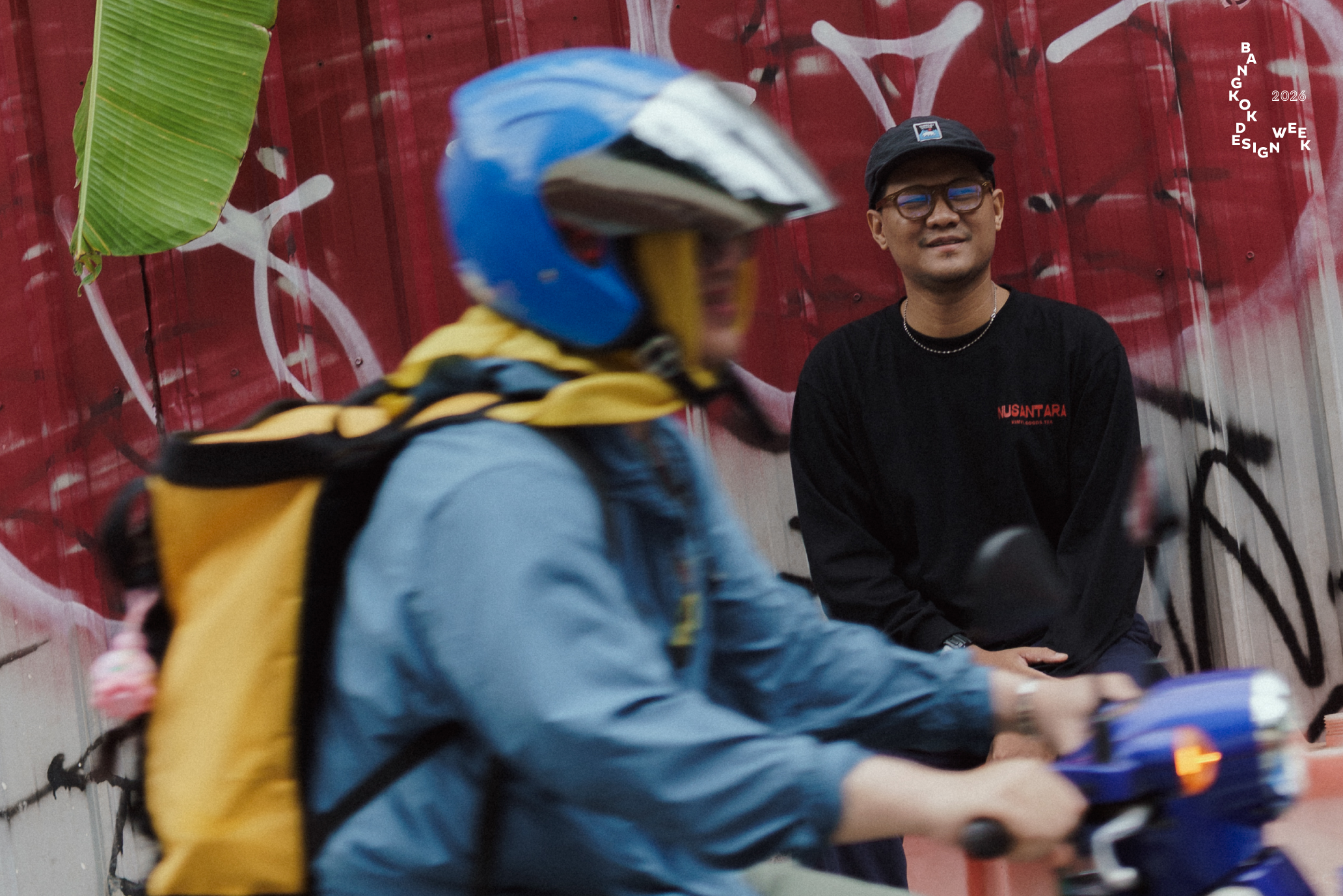
Interviewer: When you first received the theme DESIGN S/O/S, how did you interpret it?
Sarawut: When I first saw the theme DESIGN S/O/S, I felt it was more like a wake-up call – a signal urging Thai designers to rise, think, and create in their own way. And the first person to receive that signal was me. So I wanted to awaken my creativity by building on what I already have: reimagining Thai identity into something new.
Interviewer: In a world that’s moving fast and full of challenges, how do you see design as a tool to help us “survive”?
Sarawut: I believe design has always been part of our lives — from ads and art to something as simple as a coffee cup. If we want to survive today, we must truly understand what design means.
Now, with social media, nothing feels outdated anymore. Everyone understands taste and trends, often without realizing it. Inspiration is everywhere, right in our hands. The world already runs on design — and that’s why I believe design is our way to survive.
Interviewer: What does “Thainess” mean to you?
Sarawut: For me, Thainess is something close and familiar. It’s part of everyday life, not something distant or abstract. If it’s too far removed, it stops feeling real. Thainess is found in Thai patterns, one of Thailand’s most iconic motifs. It’s all around us, woven into the surroundings we’ve seen all our lives.
Interviewer: And what’s the “flavor” of your Thainess?
Sarawut: I’d say rainbow flavor (laughs). My work is never fixed. It changes with time and what’s happening around me. Like life — sometimes sweet, sometimes bitter, sometimes spicy. But this year, I’d say it’s rainbow flavor — bright, sweet, and fun.
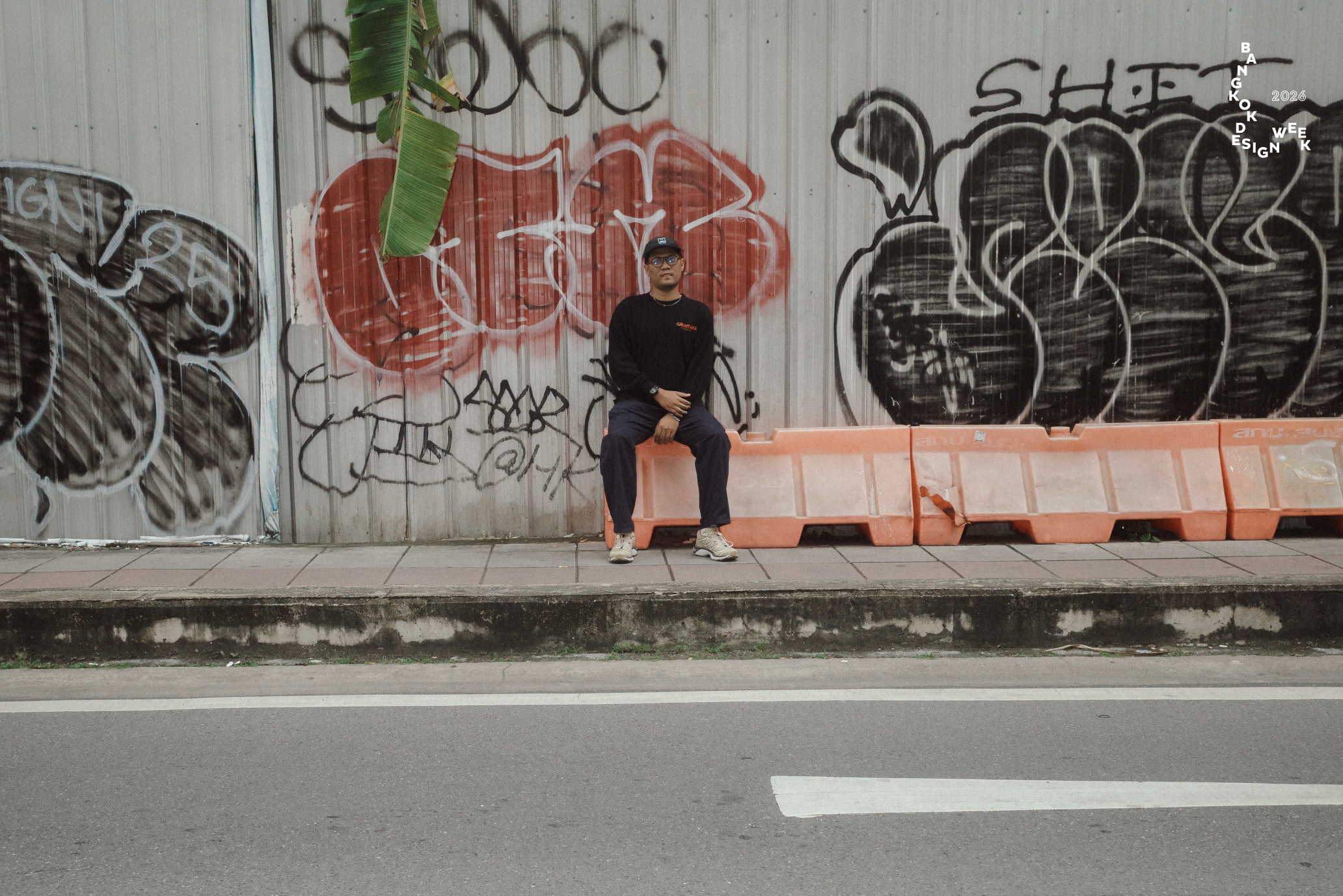
Interviewer: How did you connect DESIGN S/O/S with Thainess in your process?
Sarawut: I looked at last year’s event first, since it already explored Thai identity quite a bit. So this year, I focused on my own perspective — reinterpreting Thai patterns, culture, and everyday life I’ve known for over a decade into something more contemporary, playful, and in tune with today’s world.
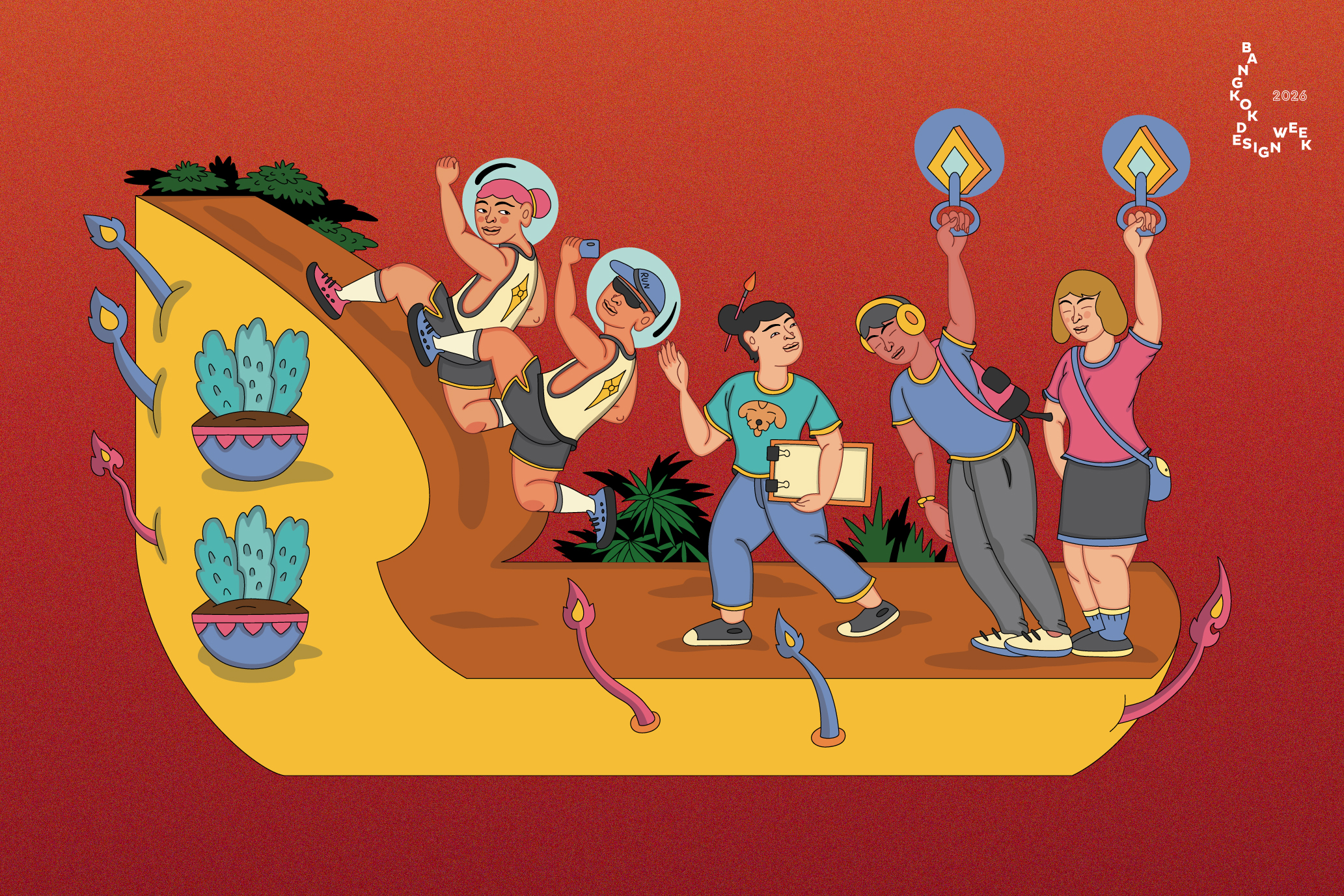
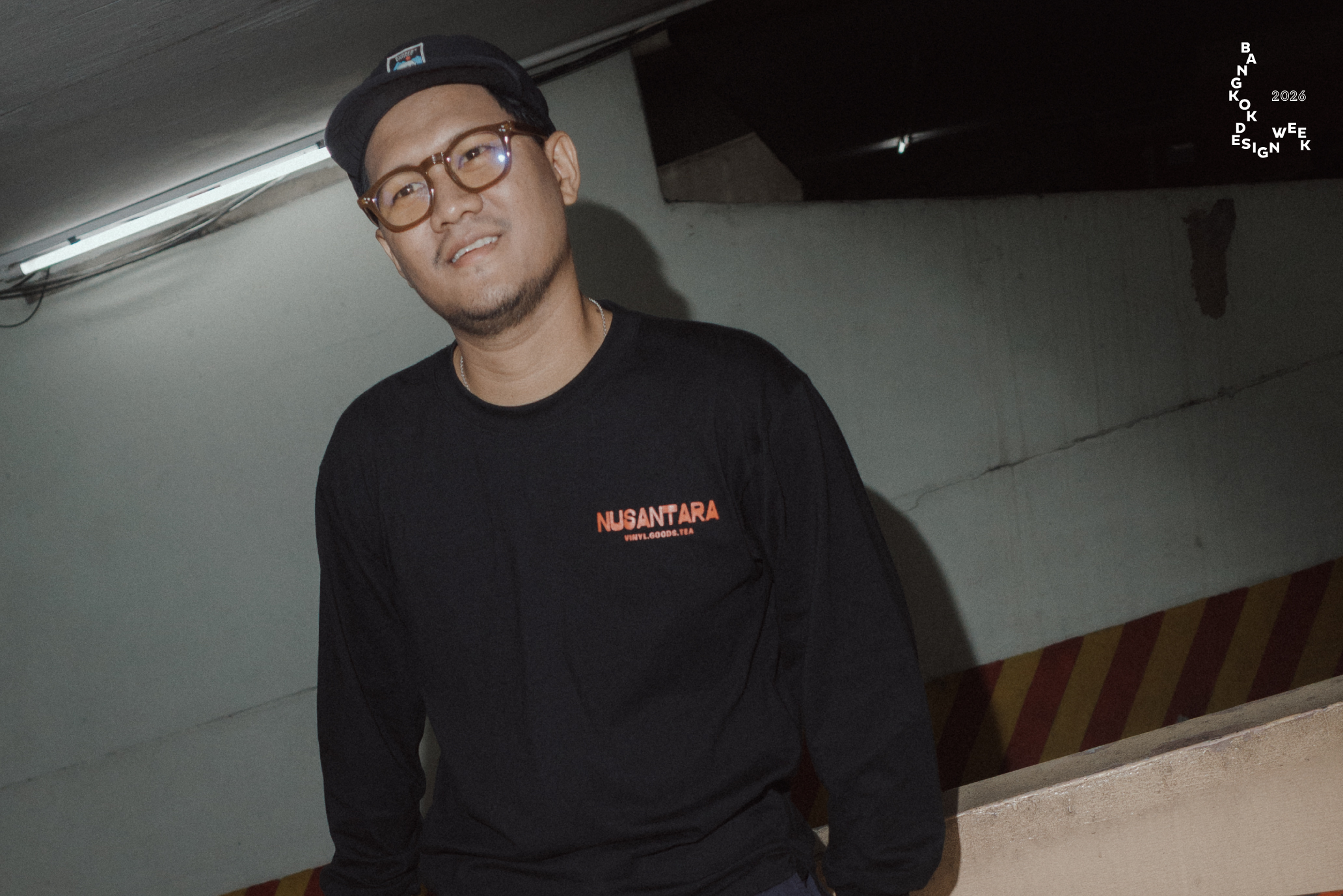
Interviewer: From concept to creation, how did you turn the idea into the Key Visual?
Sarawut: I started by researching the word “design” (laughs). Since I didn’t come from a design background, I wanted to understand it better. I realized design is a way of planning life, which made me see Bangkok as a city of design shaped by its people. I brought those stories into the Key Visual and added my own sense of Thainess.
If you look closely, you’ll see traditional Thai patterns hidden in the image — not directly, but subtly within the composition. Just like in the past, when these motifs were part of everyday life, I reinterpreted them in a modern way. I began by sketching the concept and layout, then worked with two designers to refine it into a complete piece.
Interviewer: Is there a character you like most in the Key Visual?
Sarawut: Not really — they all represent real people in Thailand’s creative scene, not fictional ones, so I like them all (laughs). If anything, the Thai pattern itself is the true character of the work. But I’m also drawn to the running figure — it captures movement, energy, and how design lives in people’s everyday lives.
Interviewer: Lastly, what would you like to say to those coming to Bangkok Design Week 2026? What can they expect?
Sarawut: You’ll see fun works and a new flavor of Thainess you might not have seen before. Some will love it, some maybe not — and that’s okay. I think it should be a space where people can feel differently and freely. Next year, the festival’s flavor might change again, but what will always stay the same is the joy of creating and discovering something new every year.
